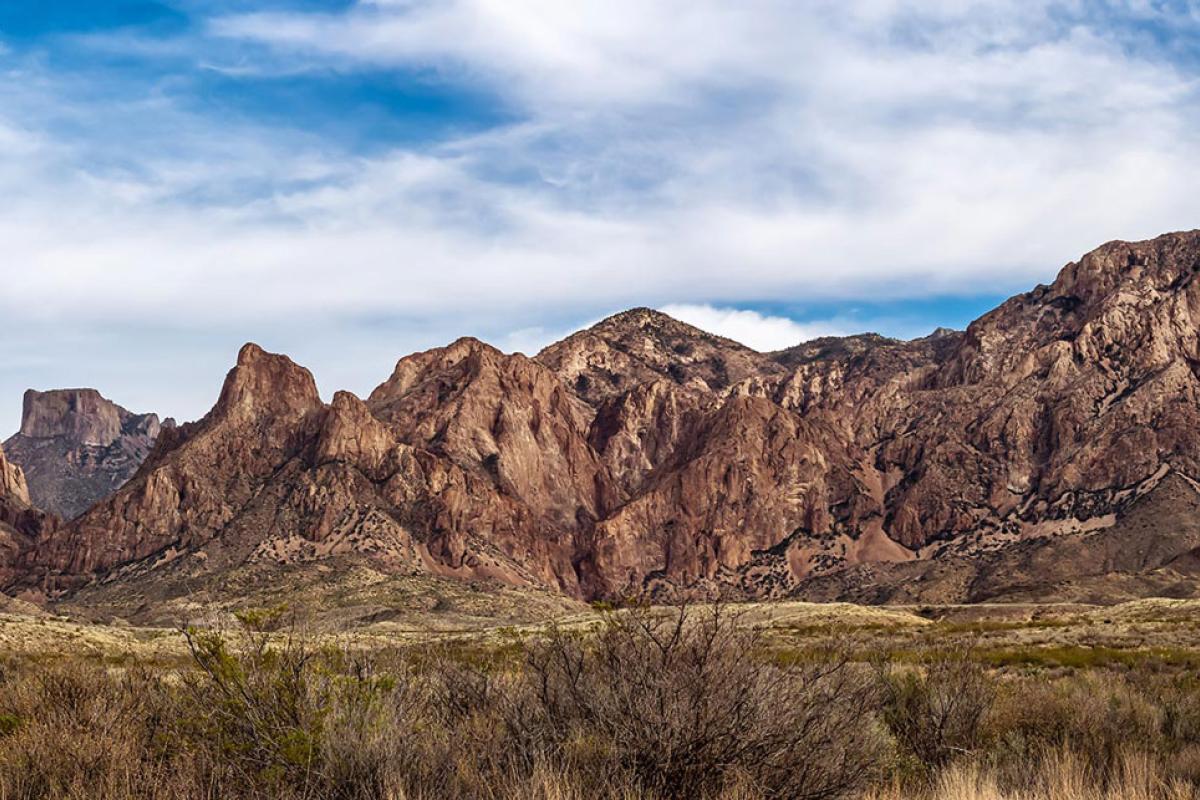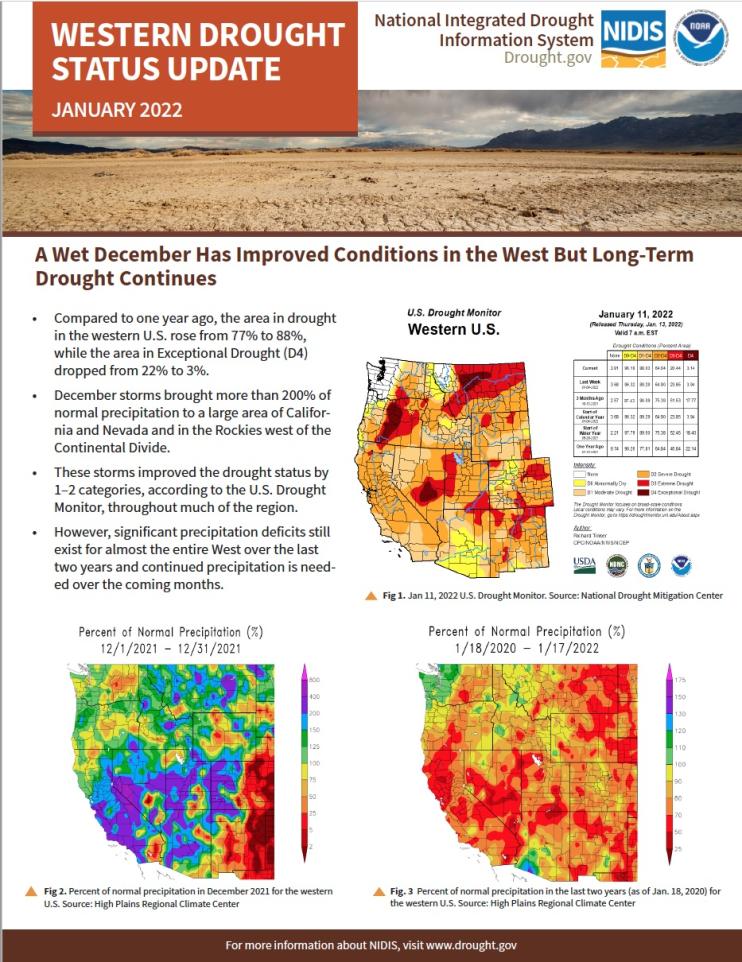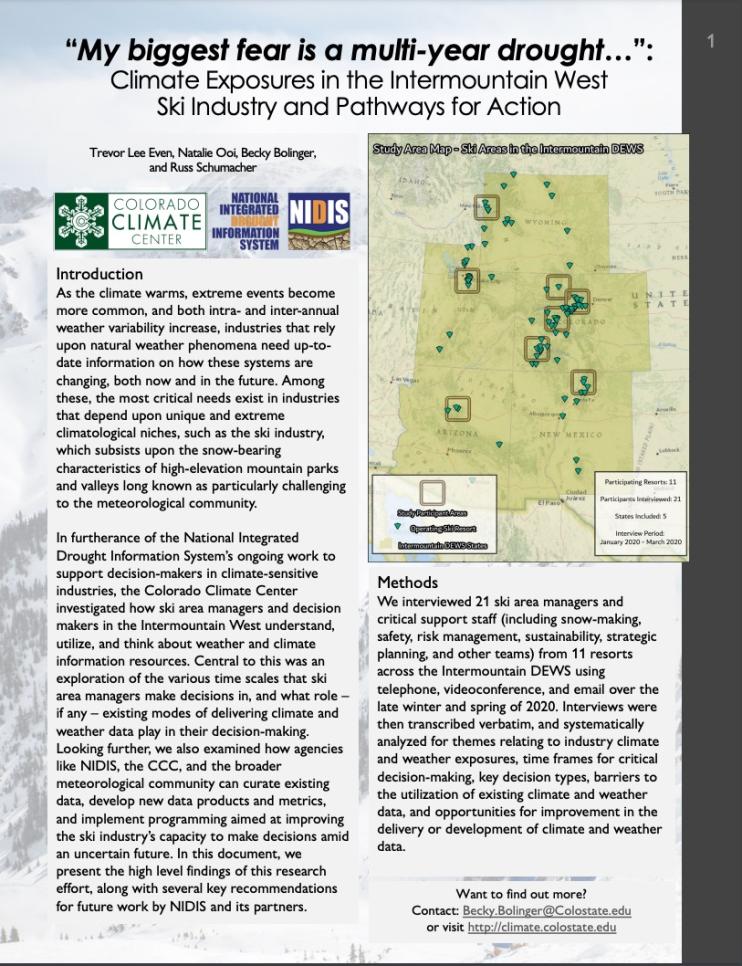Compared to one year ago, the area in drought in the western U.S. rose from 77% to 88%, while the area in Exceptional Drought (D4) dropped from 22% to 3%. December 2021 storms brought more than 200% of normal precipitation to a large area of California and Nevada and in the Rockies west of the Continental Divide. These storms improved the drought status by 1–2 categories, according to the U.S. Drought Monitor, throughout much of the region.
To further the National Integrated Drought Information System’s (NIDIS) ongoing work to support decision-makers in climate-sensitive industries, the Colorado Climate Center (CCC) investigated how ski area managers and decision makers in the Intermountain West understand, utilize, and think about weather and climate information resources. Central to this was an exploration of the various time scales that ski area managers make decisions in, and what role—if any—existing modes of delivering climate and weather data play in their decision-making.






